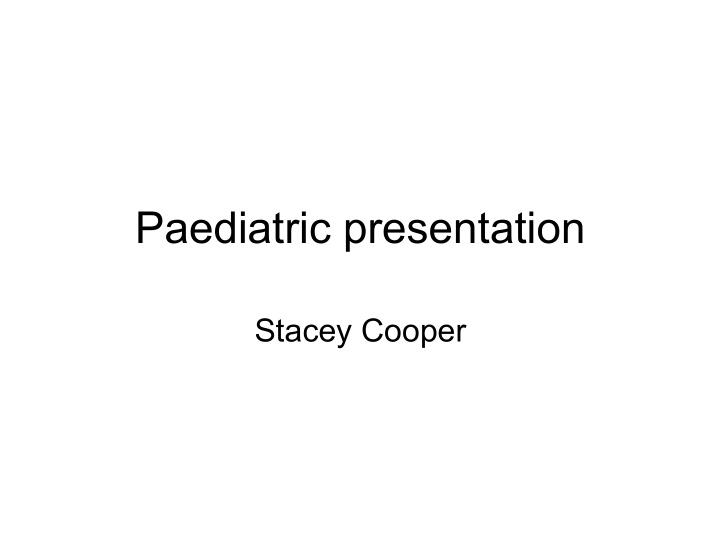



Paediatric presentation Stacey Cooper
Patient/medical history • 8 year old female • Irregular attendee, referred into community due to dental anxiety • No previous dental treatment • Family history of dental caries/periodontal disease and premature extractions • P.C.O- Nil • P.M.H- clear
Referral • OHI, diet advice • Fluoride application and fissure seal all posterior teeth. • Restorations and stainless steel crowns (SSC) as charted • Extract grossly carious LLE
Initial examination • E.O-nad • I.O- OH: poor • Caries present in 55,54,65,64,75,74,85,84 • -74 grossly carious and causing dental pain. • HIGH caries risk
Initial treatment • Extract 75 to eliminate infection and relieve dental pain. • Extensive OHI and diet advice to child and mother. • Preventative measures such as fissure sealants and fluoride application. • Restorations as charted.
PICO question • Amalgam Vs stainless steel crowns • Person: paediatric patients with amalgam restorations and SScs • Intervention: what are the benefits of SSCs • Comparison: success rates of SSCs vs amalgams • Outcome: What are the most effective?
Indications for SSCs • Grossly carious teeth • Multiple carious teeth • Following pulpotomies • High caries rate children
Evidence for SScs • Innes et al (2007) concludes that SSCs using the Hall technique are the preferred restorative method by the majority of children and GDPs. • Later within the same paper it also states the SSCs produced more favourable outcomes for pulpal health and restorative longitivity than that of class II amalgam restorations.
Evidence continued • Roberts et al: SSCs continue to prove very successful for the restoration of larger cavities and for pulp-treated primary molar teeth. For the smaller cavities RMGIC were also very successful.
Amalgam Vs SSCs • Amalgams show high success rates in class I cavities • SScs produce higher success rates in class II cavities • SSCs lasted roughly 33 months or until exfoliation.
Clinical message • Although amalgam and RMGICs have their place in paediatric dentistry I think it is important when and where possible to place SSCs using the Hall technique. • The high success rates and the patient and parent feedback all conclude that this is the preferred method of treatment
References • Innes. N., Evans. D., Stirrups. D,. (2007)`The hall technique: randomised controlled clinical trial of a novel method of managing carious primary molars in general practice` BMC Oral Health (7):18 • Roberts. J.F., Attari, N., Sherriff. M., (2005)`The survival of resin modified glass ionomer and stainless steel crown restorations in primary molars, placed in a specialist paediatric dental practice` British dental journal (198) 427-431
Recommend
More recommend